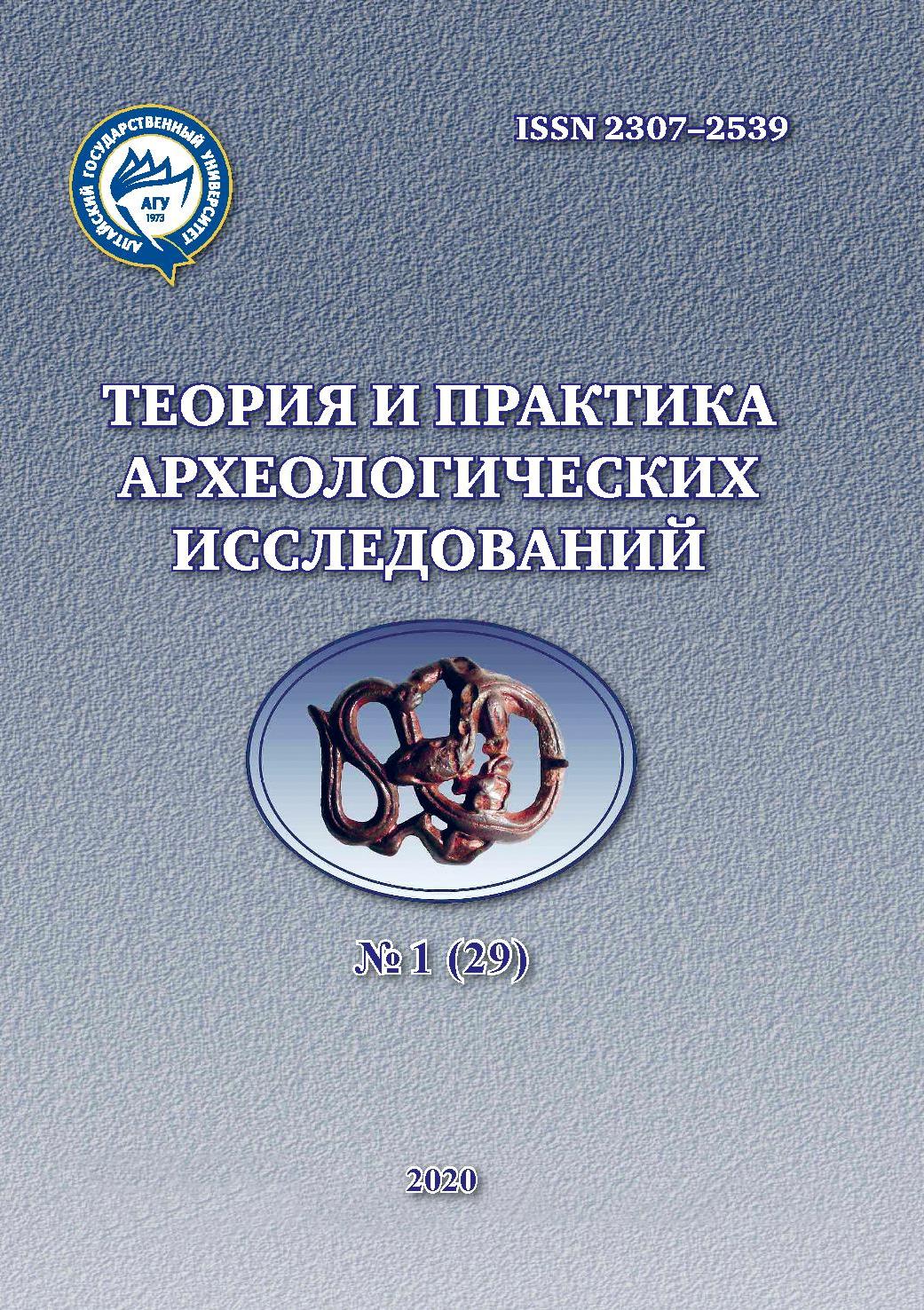MAGNETIC SURVEY OF THE PERIPHERAL AREAS OF THE KURGAN TUNNUG-1 IN TUVA
DOI:
https://doi.org/10.14258/tpai(2020)1(29).-06Keywords:
magnetometry, magnetic survey, archaeological interpretation, archeology, Tunnug, early Scythian timeAbstract
The article provides the feasibility for the using of geophysical methods, in particular, the magnetometric probing for examining the complex ritual and funeral architecture of the early Scythian kurgan Tunnug-1 and its periphery (Piy-Khemsky District of the Tuva Republic). The survey results showed that the area near close to the kurgan was used as a place of religious events and ritual burials both in the early Scythian period and by tribes living in the area in later times. As a result of the studies, subsurface local stone structures belonging to the objects of burial architecture, unevenly distributed around the near the mound territory, were discovered. The building material of stone structures has different magnetic susceptibilities, which does not prevent to reliable magnetometry localization of these archaeological objects. Areal geomagnetic surveying has proven to be an effective approach for a detailed examination of the funeral architecture, determination, and contouring of places of the religious and cult practice of the funeral memorial cycle of ancient nomads.
Downloads
References
Gryaznov M.P. Arzhan. Carskij kurgan ranneskifskogo vremeni [Arzhan – Royal Mound of the Early Scythian Time]. L., 1980. 62 p.
Sadykov T.R., Caspari Dg., Blochin E.K. Ranneskifskij kurgan Tunnug-1: rezul’taty pervyh rabot na yuzhnoj periferii pamyatnika [The Early Scythian Burial Mound Tunnug-1: Preliminary Results of the Excavation of the Southern Periphery]. Teoriya i praktika arheologicheskih issledovanij [Theory and Practice of Archaeological Research]. 2019. №1. Pp. 29–38. DOI: 10.14258/tpai(2019)1(25).-03.
Fassbinder J. Magnitometriya v arheologii – ot teorii k praktike [Magnetometry in Archaeology – from Theory to Practice] Rossijskaya arheologiya. 2019. №3. Pp. 75–91. DOI: 10.31857/S086960630005672-8.
Caspari G., Sadykov T., Blochin J., Hajdas I. Tunnug 1 (Arzhan 0) – an Early Scythian Kurgan in Tuva Republic, Russia // Archaeological Research in Asia. 2018. V. 15. P. 82–87. DOI: 10.1016/j.ara.2017.11.001.
Caspari G., Sadykov T., Blochin J., Buess M., Nieberle M., Balz T. Integrating Remote Sensing and Geophysics for Exploring Early Nomadic Funerary Architecture in the “Siberian Valley of the Kings” // Sensors. 2019. V. 19. С. 3074. P. 1–13. DOI: 10.3390/s19143074.


